| Author |
 Topic Topic  |
|
Xavier
Scientific Collaborator
    
France
12338 Posts |
 Posted - 18/05/2014 : 21:11:46 Posted - 18/05/2014 : 21:11:46



|
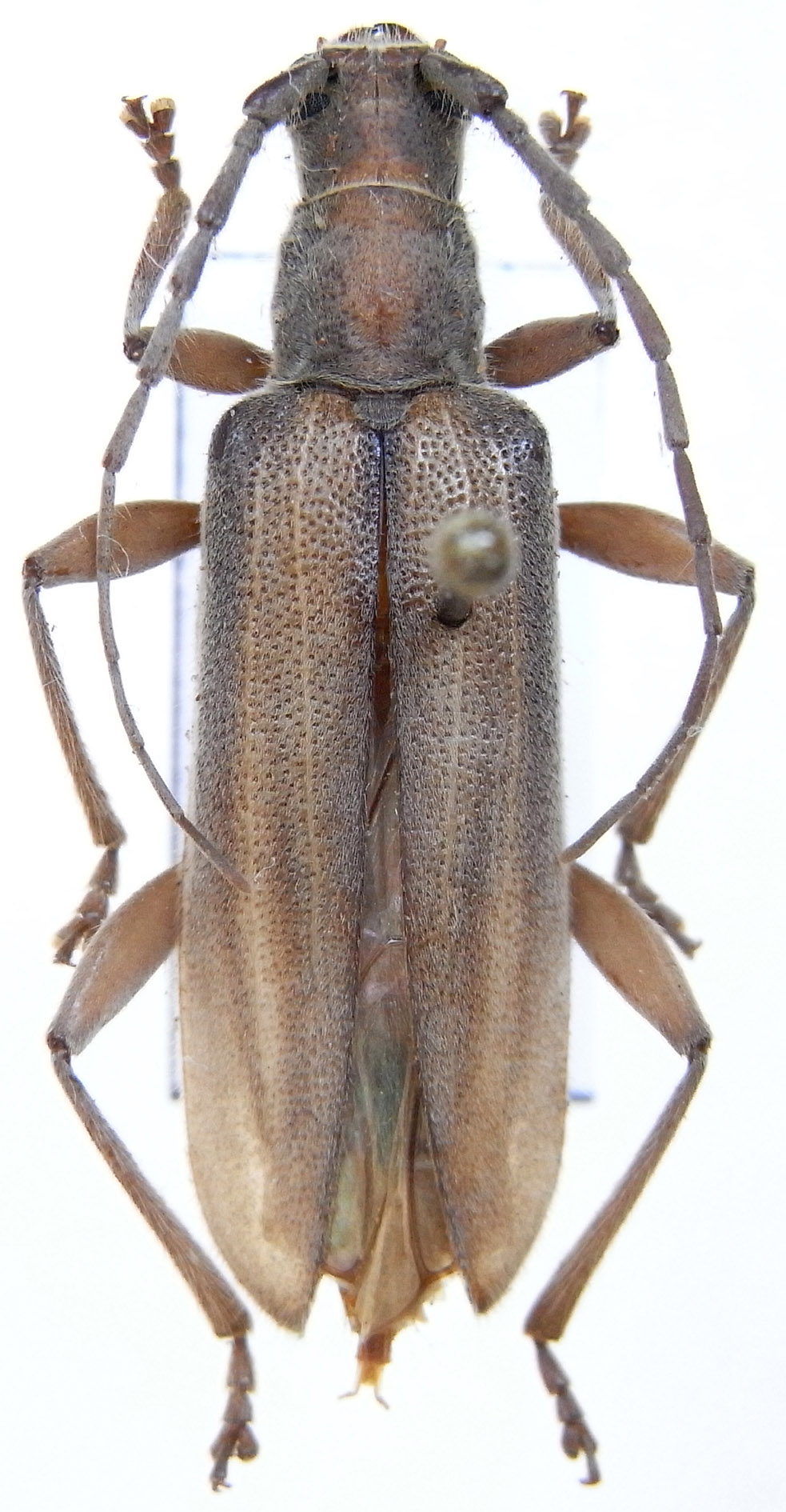
23 mm. Hua Phan, nord Laos.
La forme des mandibules me fait penser à un Oemini, ...à part ça  . Peut-être immature ? . Peut-être immature ? |
Edited by - Xavier on 02/03/2017 20:25:27 |
|
|
Xavier
Scientific Collaborator
    
France
12338 Posts |
 Posted - 18/05/2014 : 21:27:56 Posted - 18/05/2014 : 21:27:56



|
| Genre proche de celui-ci, il me semble, ou de Pacholatkoa Holzschuh, 1993 |
 |
|
|
Francesco
Forum Admin
    
Luxembourg
9511 Posts |
 Posted - 19/05/2014 : 21:19:41 Posted - 19/05/2014 : 21:19:41




|
| Et pourquoi pas celui-ci... |
 |
|
|
Xavier
Scientific Collaborator
    
France
12338 Posts |
 Posted - 19/05/2014 : 21:54:47 Posted - 19/05/2014 : 21:54:47



|
En effet. En triant parmi les espèces du genre, je retiens Cristaphanes cristulatus (Aurivillius, 1916) ( = Lasiophanes cristulatus ) comme un candidat possible.
Sur photo, j'écarte les 2 autres espèces citées du Laos par Gressitt, et 2 décrites par Holzschuh. J'écarte aussi, géographiquement, une espèce de Philippines et une de Bornéo.
Reste à trouver la description de C. cristulatus ... |
Edited by - Xavier on 19/05/2014 21:55:54 |
 |
|
|
Francesco
Forum Admin
    
Luxembourg
9511 Posts |
 Posted - 19/05/2014 : 21:58:58 Posted - 19/05/2014 : 21:58:58




|
quote:
Originally posted by Xavier
Reste à trouver la description de C. cristulatus ...
Dans la library  .... il y a aussi un dessin, mais je ne peux pas le mettre dans BioLib car encore sous copyright. .... il y a aussi un dessin, mais je ne peux pas le mettre dans BioLib car encore sous copyright. |
 |
|
|
Xavier
Scientific Collaborator
    
France
12338 Posts |
 Posted - 19/05/2014 : 22:02:23 Posted - 19/05/2014 : 22:02:23



|
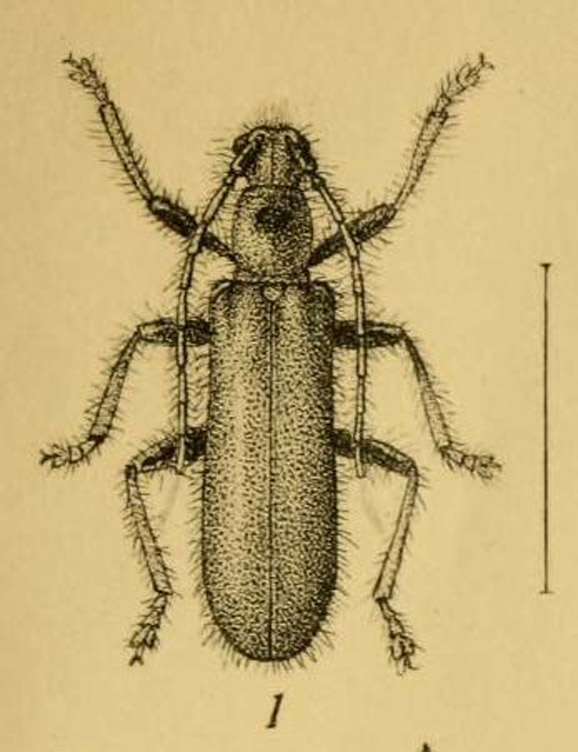
Dessin original de Cristaphanes cristulatus (Aurivillius, 1916) in AURIVILLIUS Christopher, 1916.Neue oder wenig bekannte Coleoptera Longicornia. 16.Arkiv för Zoologi, Uppsala 10 (19): 335-360, 4 figs, 1 pl.
Ben, moi je l'ai mis .... |
Edited by - Xavier on 19/05/2014 22:03:34 |
 |
|
|
Xavier
Scientific Collaborator
    
France
12338 Posts |
 Posted - 19/05/2014 : 22:04:14 Posted - 19/05/2014 : 22:04:14



|
| Mon espèce à moins de poils... |
 |
|
|
Xavier
Scientific Collaborator
    
France
12338 Posts |
 Posted - 20/05/2014 : 07:26:58 Posted - 20/05/2014 : 07:26:58



|
Pour compléter, la description originale de Aurivillius (1916) :
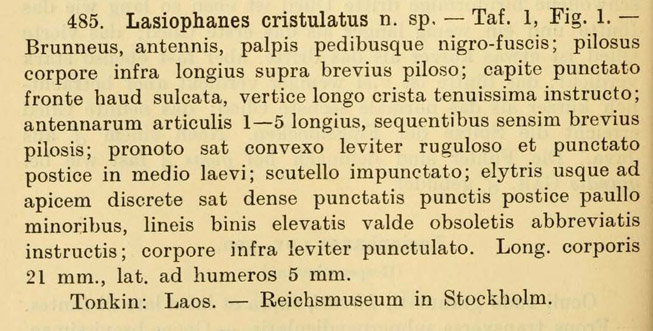
La longueur des segments antennaires et des poils ne colle pas, il me semble... |
 |
|
|
Xaurus
Member Rosenbergia
   
Germany
1964 Posts |
 Posted - 20/05/2014 : 20:57:14 Posted - 20/05/2014 : 20:57:14



|
Hi,
I have 2 spms from Vietnam (Pia Oac, Ba Be NP) resemble yours Xavier.
I have compared my spms with material in the coll. of Holzschuh, the genus is very near, but genus feature is a small keel at the humerus for Cristaphanes (according CH), our spms haven't it. Did anybody see the HT of C. cristulatus in Stockholm. Our sps should be C. cristulatus is also described from Tonkin.
cheers soon in germany again |
 |
|
|
Xavier
Scientific Collaborator
    
France
12338 Posts |
 Posted - 21/06/2014 : 09:49:37 Posted - 21/06/2014 : 09:49:37



|
My specimen is not C. cristulatus. I have (seen) a "real one", as the Aurivillius drawing and as Gressitt's illustration (Laos fauna, 1970). It's a totally different species: reddish and hairy !

Fig.18a. "Lasiophanes cristulatus Aur."
|
Edited by - Xavier on 24/10/2016 09:32:55 |
 |
|
|
Xavier
Scientific Collaborator
    
France
12338 Posts |
 Posted - 21/06/2014 : 10:41:43 Posted - 21/06/2014 : 10:41:43



|
I am searching now arround Philus (Philini tribe). It's possibly Philus longipennis Pic, 1930 ...
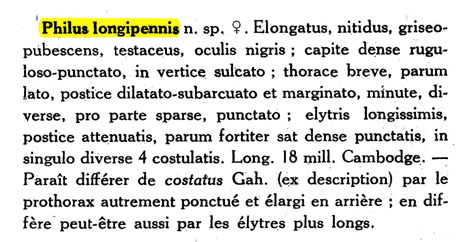
Type to check at MNHN...
|
Edited by - Xavier on 21/06/2014 10:57:41 |
 |
|
|
Francesco
Forum Admin
    
Luxembourg
9511 Posts |
 Posted - 24/06/2014 : 18:18:45 Posted - 24/06/2014 : 18:18:45




|
Philini... je ne reconnais pas cette tribu ici.
Il serait intéressant de lui ouvrir un élytre et voire l'aile inférieure. |
 |
|
|
Xavier
Scientific Collaborator
    
France
12338 Posts |
 Posted - 10/07/2014 : 10:28:29 Posted - 10/07/2014 : 10:28:29



|
J'hésite à le faire...peux-tu me dire ce qu'il faut regarder sur ces ailes ?
La description de P.longipennis colle assez bien à ma bête. |
 |
|
|
Xavier
Scientific Collaborator
    
France
12338 Posts |
 Posted - 08/01/2017 : 12:42:27 Posted - 08/01/2017 : 12:42:27



|
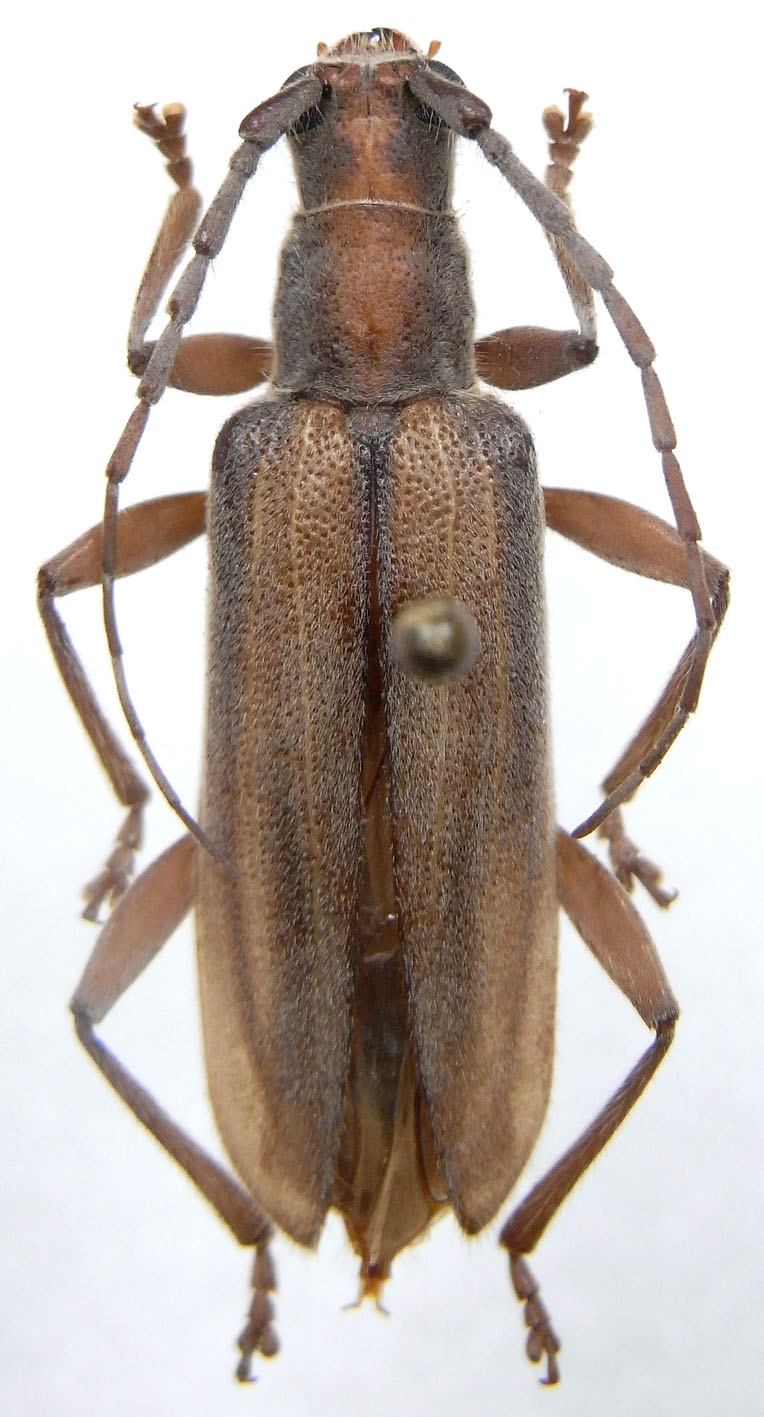
173.61 KB

86.52 KB
Other pictures |
Edited by - Xavier on 08/01/2017 12:43:09 |
 |
|
|
Xavier
Scientific Collaborator
    
France
12338 Posts |
 Posted - 09/01/2017 : 14:50:27 Posted - 09/01/2017 : 14:50:27



|
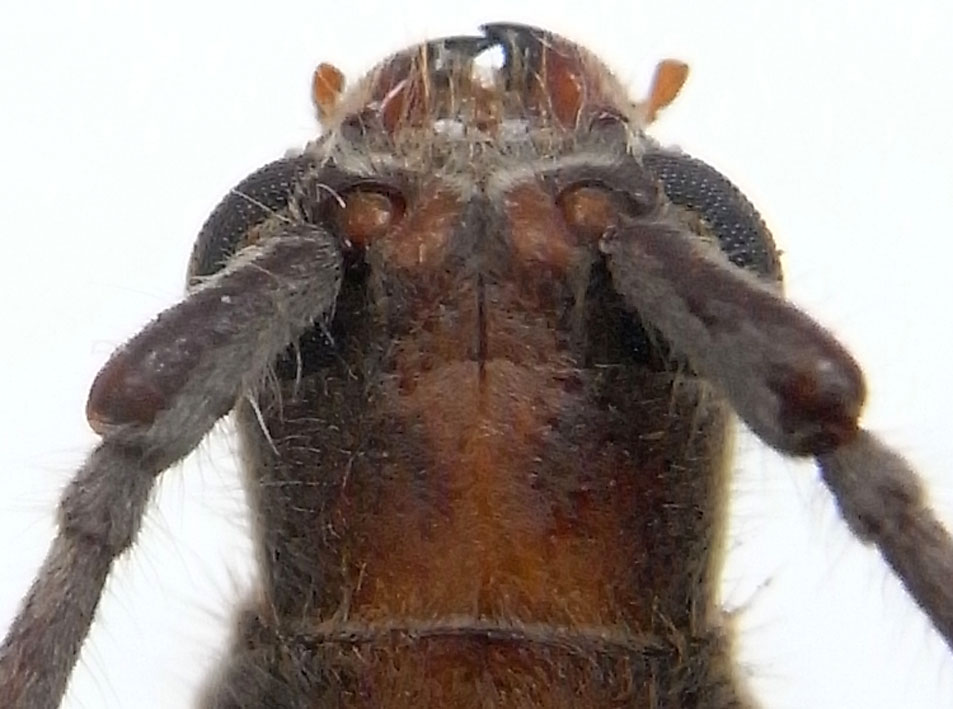
118.1 KB
Head (same specimen) |
 |
|
|
Francesco
Forum Admin
    
Luxembourg
9511 Posts |
 Posted - 25/01/2017 : 09:32:57 Posted - 25/01/2017 : 09:32:57




|
quote:
Originally posted by Xavier
J'hésite à le faire...peux-tu me dire ce qu'il faut regarder sur ces ailes ?
Les Philini ont les ailes comme tous les Cerambycoidea primitifs, c.a.d. avec une deuxième cellule anale (en rouge) et une veine entre la cubitale 1 e 2 (en verte)
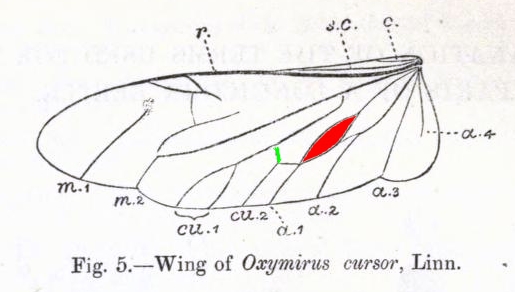
Gahan, 1906: X
Les Cerambycinae n'ont pas de cellule, ni de veines intercubitales
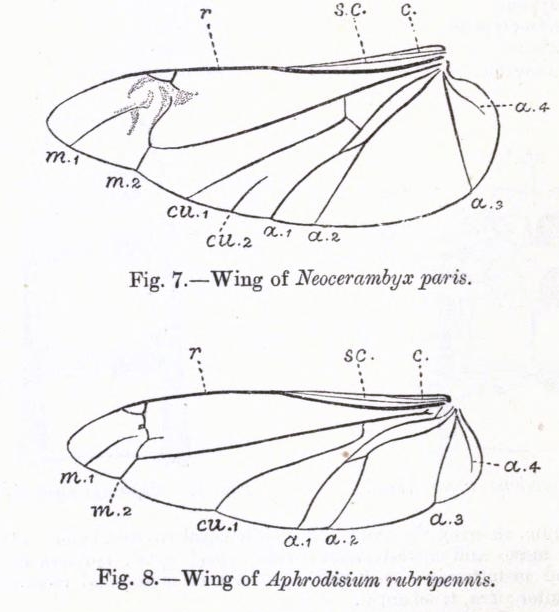
Gahan, 1906: X |
 |
|
 Topic Topic  |
|


